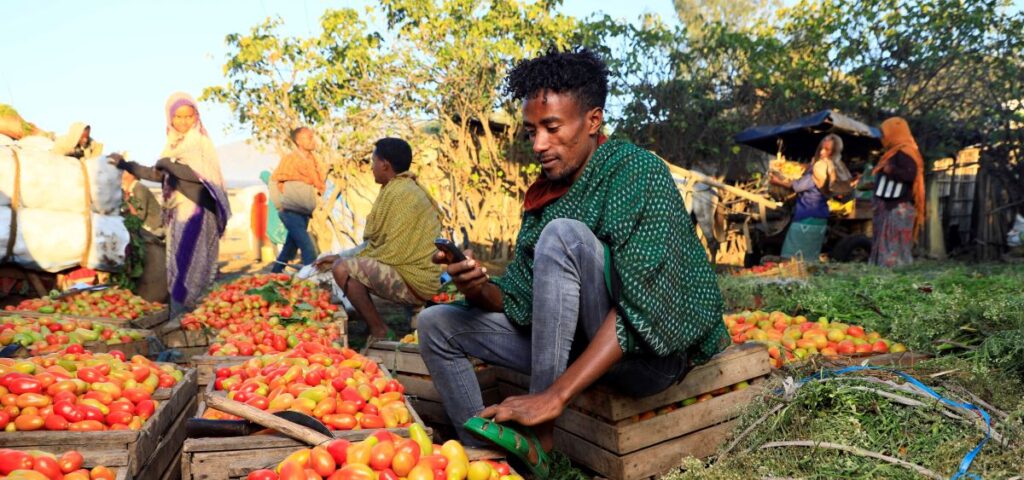Read in
A new report outlines how an innovative market-driven approach to tackling poverty in rural Ethiopia is proving that smallholder farming can be both profitable and sustainable in regions impacted by climate change.
The Strengthening Agricultural Market Systems report (PDF 1MB) details how the Market Systems project, funded by the Swedish International Development Agency (Sida) and implemented by Farm Africa, ORDA and Mercy Corps, helped smallholder farmers in the Amhara region of northern Ethiopia gain access to the buyers and suppliers they needed to build thriving farming businesses.
Innovative, cost-effective solutions were collaboratively developed to better connect farmers to input and output markets, increase agricultural productivity, open up access to Sharia-compliant finance and conserve natural resources. Together these interventions have increased average net profits for some crops by over 300% in two years.
A lack of reliable and affordable access to farming inputs like commercial fertilisers and drought-tolerant seed had been constraining farmers’ productivity and therefore profits. To overcome this, the project established and strengthened three private agro-dealers and three farmers’ cooperatives so that product ranges could be diversified and supplied to farmers at a fair price in a timely way.
Yields were also declining due to farmers struggling to adapt their farming practices to more frequent droughts. The project helped farmers boost their yields by adopting climate-smart farming methods, improving their post-harvest handling of crops, and using vermi-composting techniques to produce high-quality, low-cost organic fertiliser.
A third major profit sinkhole had been the inability to secure good prices for crops due to an ineffective output market. Farmers were encouraged to track which crops were in high demand, produce crops collectively to strengthen negotiating power, and develop their links to buyers. A new digital system called Farmer App was developed, enabling 1300 farmers to monitor market selling prices from their phones. For farmers like Mohammed Abdu, that has been a game-changer:
“Before we were able to access market information via SMS, the dealers used to come to our farm physically to buy the products at a price they wanted. We didn’t have any knowledge as to how the market was operating. We used to sell our products by ‘guesstimate’. We simply sold our products at the price offered to us. Thanks to the project, we have got awareness and training about the market system and how we can best benefit from the market.”
Lack of financing has also been a constraint. Many farmers in the area are unable to use conventional finance due to cultural and religious beliefs that prevent them from taking out loans with interest applied. Without finance options, it is difficult for farmers raise sufficient capital to invest in inputs or long-term assets such as machinery or land. To overcome this, the project consulted with the community and influential leaders to develop inclusive, Shariah-compliant financial services.
Finally, degradation of previously fertile land, or lack of access to any land at all, has made it all the more difficult for vulnerable rural people to earn a living from farming. To address this, unemployed young people were given stewardship of plots of degraded land on hillsides along with training on how to restore fertility to their plots by building terraces and planting fruit trees, forage trees and vegetables.
For smallholder farmers in Amhara, the cumulative effect on profit margins has been dramatic. In just two short years net profit per acre has increased by 309% for mung bean seed (17,792 Ethiopian Birr (ETB) to 72,709 ETB), by 181% for tomatoes (93,207 to 262,304 ETB) and by 67% for onions (120,899 to 201,891 ETB).
Small-scale farmer Abdu Sied said of the change:
“Being part of a cluster has allowed us to aggregate our products, to carefully plan and produce according to the calendar and quality expectation of the market. We no longer rush to sell our onions at any prices. Instead, we wait until we get better prices thanks to the project, which has allowed me to build an onion storage.”


